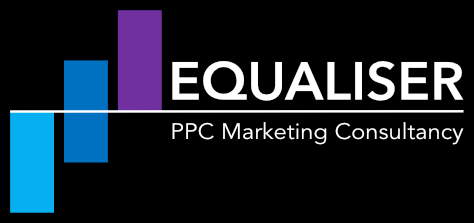Black Friday remains the cornerstone of the ecommerce calendar, and 2024 was no exception.
This year’s data revealed several key PPC trends shaping strategies across industries. We take a deeper dive into these trends, their implications, and how businesses can adapt their strategies for sustained success.
1. Shopping Ads Lead the Way
Shopping campaigns solidified their position as the go-to format for maximising visibility and driving revenue during Black Friday.

This trend reflects the growing consumer preference for product-led formats that simplify decision-making by showcasing key details such as price, product images, and promotional offers directly in the ad.
Why Shopping Ads Perform So Well
Consumers gravitate toward shopping ads because they provide all the information needed to compare products at a glance. In 2024, many ads included "Sale" labels and strikethrough pricing—a tactic that proved particularly effective at capturing attention.
By highlighting discounts prominently, brands not only increased click-through rates (CTR) but also enhanced the likelihood of conversions.
Strategic Takeaway
Advertisers should continue refining their shopping campaigns to align with consumer expectations. Optimising product feeds, ensuring accurate and appealing pricing details, and leveraging seasonal promotions are all crucial steps to stand out in this highly competitive format.
2. Costs Are Rising
Black Friday has always been an expensive period for advertisers, and 2024 was no different. CPCs surged across multiple verticals as brands engaged in aggressive bidding wars to secure valuable impression share.
This increase in costs was amplified by rising budgets and a heavy reliance on bid strategy algorithms to optimise performance at scale.
What’s Driving the Increase in CPCs?
Increased Competition: With more advertisers entering the Black Friday space, the auction environment became more competitive, driving up costs.
Higher Budgets: Many brands significantly increased their ad spend in anticipation of greater demand, further intensifying the competition.
Algorithm-Driven Adjustments: Automated bid strategies optimised for conversions or ROAS often resulted in higher bids to capture additional traffic.
Mitigating Rising Costs
To manage rising CPCs effectively, brands need to focus on:
Precision Targeting: Narrowing audiences to ensure ads reach high-intent users.
Budget Allocation: Prioritising high-performing campaigns and scaling incrementally.
Performance Monitoring: Continuously evaluating campaign efficiency and adjusting bids in real time.
3. Decisions Are Faster
Consumer behaviour during Black Friday has evolved to favour shorter decision-making windows. Many purchases were completed within compressed timeframes, with shoppers often engaging across multiple touchpoints—search, social, and direct—before converting.
Key Factors Driving Faster Decisions
Pre-Black Friday Research: Many consumers began researching deals well before Black Friday, entering the event ready to act quickly.
Compelling Messaging: Clear, direct messaging in ads ensured that brands captured attention immediately.
Streamlined Purchase Journeys: Sites with intuitive navigation and easy checkout processes saw higher conversion rates.
Strategic Takeaway
To succeed in this fast-paced environment, brands should:
Craft clear, impactful ad copy that highlights value propositions.
Optimise landing pages to ensure seamless user experiences.
Use retargeting campaigns to re-engage users who abandoned carts or clicked but didn’t convert.
4. New Customer Acquisition
Black Friday remains a pivotal period for acquiring first-time customers.
The influx of traffic presents a golden opportunity to introduce new audiences to your brand. However, the challenge lies in retaining these customers and turning them into loyal buyers.
Why New Customer Acquisition Matters
Expanding Customer Bases: Black Friday traffic often includes users who don’t typically shop with a brand, offering the chance to reach untapped segments.
Building Long-Term Value: While initial sales may come at a discount, repeat purchases drive higher lifetime value (LTV).
Retention Strategies Post-Black Friday
Personalised Email Campaigns: Follow up with new customers using tailored recommendations and exclusive offers.
Loyalty Programs: Encourage repeat purchases by rewarding new customers for their continued engagement.
Social Media Engagement: Stay visible to new audiences through engaging, value-driven content.
5. Promotions Remain Critical
Aggressive discounts were central to Black Friday success, but timing and strategy were equally important. Brands that built momentum throughout November, rather than focusing solely on Black Friday itself, performed better overall.
Balancing Discounts and Profitability
While deep discounts drive volume, they can negatively impact average order value (AOV) and ROAS.
Brands that found the right balance - offering compelling deals without eroding profitability - stood out.
Strategic Takeaway
Use staggered promotions leading up to Black Friday to build excitement and sustain momentum.
Highlight bundled offers to increase AOV.
Monitor performance metrics closely to adjust discount levels in real time.
6. Competition Intensifies
The Black Friday marketplace was more crowded than ever, with advertisers vying for consumer attention across every channel.
This created significant challenges for brands trying to stand out amidst the noise.
How to Differentiate in a Crowded Market
Pricing Strategies: Offering competitive pricing while maintaining profitability.
Creative Excellence: Using eye-catching visuals and persuasive copy to break through the clutter.
Strong Value Propositions: Clearly communicating why your product or service is better than the competition.
Strategic Takeaway
Differentiation is key to capturing attention and driving conversions. Brands should invest in creative testing, refine their messaging, and ensure consistent branding across channels.
7. Demand Keeps Growing
Black Friday 2024 saw record-breaking search demand and product category volumes, with year-on-year growth across many sectors.
This underscores the event’s importance as a critical trading period for ecommerce brands prepared to capitalise on heightened activity.
Leveraging Peak Demand
To maximise results during peak periods:
Ensure campaigns are scalable, with budgets that can adapt to increased traffic.
Use historical performance data to forecast and prepare for demand surges.
Optimise product inventory to meet shopper expectations.
Key Takeaway
Black Friday 2024 demonstrated that success hinges on preparation, balancing risk and reward, and focusing on the fundamentals.
Brands that showcased their best products with the right price, positioning, and promotion not only thrived during the event but also set the stage for a strong holiday season.
By understanding these trends and adapting strategies accordingly, businesses can position themselves for sustained growth in an increasingly competitive ecommerce landscape.
Looking to elevate your PPC strategy?
Contact us today to explore how we can help optimise your campaigns and maximise your results.

Kommentare